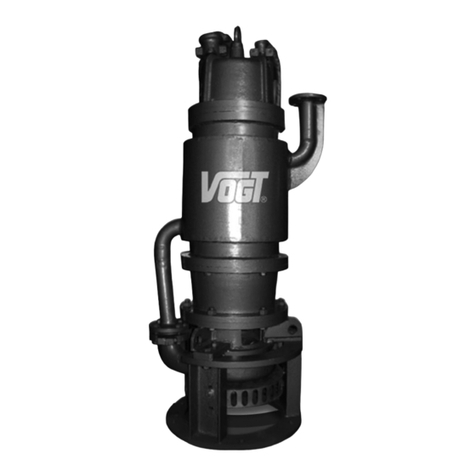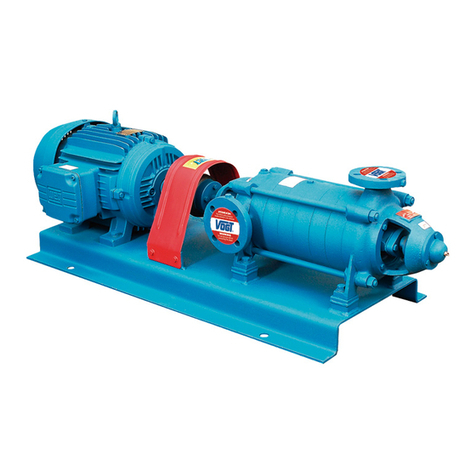
6
Transaction
Information
Transaction Information
The pump performs its pumping work by means of the centrifugal rotary action of the impeller rotating inside the casing
and for everything to work properly the following considerations must be kept in mind:
1. Complete check of the entire pumping system prior to start-up. Piping properly aligned to the pump, valves in good
condition, controls operational, pump alignment and belt tension checked, etc.
2. GAP between impeller and suction disk should be checked. This should be between 1 and 2 [mm], to increase
efficiency and decrease recirculation inside the equipment.
3. Activate the water seal system before starting the pulp pump, adjust flow and pressure according to the equipment
requirements. This operation is performed with the pump in commissioning to verify water flow through the jacket.
4.1 Pump Baseplate
Before leaving the factory, the pump and its motor unit are mounted on a level base that serves as an assembly stand.
For alignment in the field, compensating bases (slats) are used to lift the motor if necessary for the correct assembly of
the motor-pump assembly. The bases installed on the foundation in the equipment installation area will support the base
of the assembly. Once the base of the assembly is installed and tightened against the foundation, the alignment of the
equipment is started, using the lag bolts if necessary.
4.2 Foundations
The foundation supporting the pump-motor assembly must be able to withstand vibrations of both the pump and the
motor and should be as close as possible to the source of the fluid to be conveyed. The motor pump assembly should
be supported on a generously sized foundation. This foundation must be completely flat, smooth and level. The unit shall
be tied to this foundation by means of suitable anchor bolts to avoid possible vibrations due to operation. The space
required for a pumping unit and the placement of anchor bolts are defined by the drawings supplied by the
manufacturer.
4.3 Alignment of the Axis
Regardless of whether they are direct coupled or belt driven, the pump and motor shaft must be precisely aligned.
4.4 Pipelines
For optimum operation of the pump-motor unit, the piping should not exert stresses on it, since the unit can deform,
misalign or break when the piping is not correctly aligned with the suction and discharge shafts of the pump. The
position of the flanges must be totally parallel, with their concentric axes, in order to minimize stresses in the pump
necks that deform the pump or produce a misalignment of axes. The bolts or studs must be able to pass loosely through
the holes in the flanges. Do not use the pump as an installation fastening point. The suction and delivery piping must not
cause stresses on the pump flanges that could exceed their maximum values. The piping should be fixed to the walls or
floors of the pump room in such a way that the pump is not subjected to the weight of the piping.

































